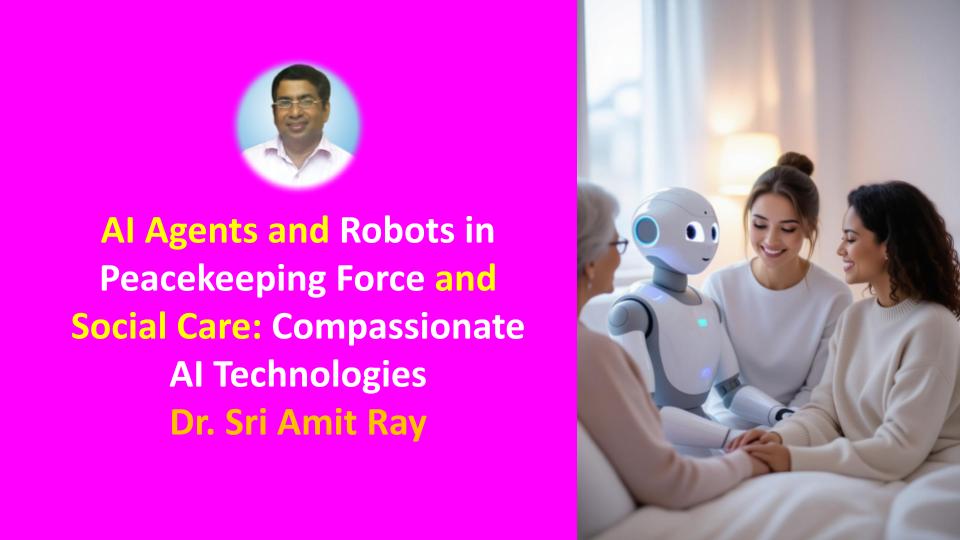Abstract
A Peacekeeping Compassionate Robot is an autonomous or semi-autonomous robotic system engineered to support peacekeeping and conflict mitigation operations by combining advanced sensing, decision-making, and actuation capabilities with ethical, affective, and prosocial behaviors. Such robots are designed to interact safely and empathetically with humans, facilitating de-escalation, providing assistance in crisis situations, and promoting social cohesion. Their operation integrates multidisciplinary frameworks, including robotics, artificial intelligence, human–robot interaction, cognitive modeling, and moral reasoning, enabling them to respond adaptively to complex social environments while minimizing harm and fostering trust and cooperation.

This article examines the emerging role of AI agents and compassionate robots in peacekeeping operations and social care environments. It explores how advanced artificial intelligence, ethical decision-making frameworks, and human–robot interaction principles can be integrated to design systems that not only enhance operational efficiency but also promote empathy, trust, and social harmony.
The article highlights the technological, ethical, and practical considerations in deploying such systems, including autonomous sensing, adaptive behavior modeling, conflict de-escalation, and human-centric care. By bridging the domains of robotics, AI, and social sciences, this work aims to provide a comprehensive framework for the development and responsible implementation of compassionate AI technologies in contexts that demand both safety and empathy.
Introduction: A New Era of Compassionate AI
The 21st century presents humanity with two pressing needs: the quest for peace in conflict-ridden zones and the demand for holistic social care in rapidly aging societies. Artificial intelligence (AI), once confined to data processing and automation, is now emerging as a transformative partner in meeting these challenges. At the heart of this revolution lies Compassionate AI—systems designed not only for efficiency but for empathy, ethics, and human dignity.
A landmark innovation in this domain is the Ray Mother–Infant Inter-Brain Synchrony Algorithm (MI-Sync-AI), developed in the Sri Amit Ray Compassionate AI Lab. By modeling the profound neural synchrony between mothers and infants, MI-Sync-AI enables AI agents and robots to establish trust-based, empathetic interactions with humans. This breakthrough paves the way for AI to act as a peacekeeping force and as a social care ally, fostering harmony, well-being, and resilience worldwide.
Read more ..


